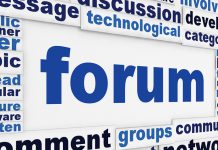Last Friday, March 18, thousands of radiation scare articles hit the news outlets. Some in Newport Beach thought Armageddon had arrived.
Once again the media terrorists had struck.
Let’s stop and gather some sense and measure some sensibility from the radiation facts.
As noted by Jane Orient, M.D., executive director of The Association of American Physicians and Surgeons (AAPS), the earth did move in Japan and thousands of people were buried in rubble or washed out to sea. Hundreds of thousands are homeless, and suffering from thirst, hunger, and cold. Lacking reliable electricity, much of industry is shut down even if undamaged.
We don’t know the total death toll as yet, but so far the score is earthquake and tsunami around 10,000; nuclear energy, 0. But the damaged nuclear reactors were nonetheless at the top of the news.
The tsunami affected the other side of the Pacific too; some Americans lost their lives, or had to be rescued by the Coast Guard.
The biggest fear, however, is not the tidal wave, but the prospect that demon radiation will cross the Pacific and rain down death. Potassium iodine tablets are selling out. Anti-nuclear activists call for shutting down nuclear energy.
There is no need to criticize people for buying potassium iodine; many already have some. If you ever really need it, you probably won’t be able to get it. Don’t assume that our government has stockpiled KI or other essentials.
There are a lot of other things that the Japanese need more right now, such as bottled water and food. You do have some of that stored away, don’t you?
Another need is for radiation monitoring instruments. More than 1,000 RadStickers, postage-stamp sized detectors that instantly measure dangerous levels of radiation, have been sent to Japan as a gift by an American scientist.
The main purpose of RadStickers is to prevent panic. They are not very sensitive, so they are not going to pick up background radiation, or the excess radiation from a load of bananas or pottery. The lowest reading is 25 rads.
An acute dose of less than 100 rads probably wouldn’t make you sick. A dose between 300 and 400 rads causes acute radiation sickness and a 50% chance of death. There’s a widespread belief that the teeniest dose might increase your risk of getting cancer in 20 years, say adding 1 percentage point to the 25 percent risk you have anyway, but there is also much evidence that low doses are actually protective.
For perspective, here are some numbers. The dose from one chest x-ray is about 0.01 rem and from a full-body spiral CT scan up to 10 rem. (In this context 1 rem is about the same as 1 rad.) If you stood at the gate of the damaged Fukushima nuclear reactor plant for 10 hours at the highest dose-rate, you’d get as much radiation as from the total-body CT scan.
Irresponsible terror-mongers have been distributing material on the Internet predicting an instantly lethal dose of 750 rads hitting western and intermountain North America within 10 days. This is preposterous.
Sen. Joe Lieberman is calling for a moratorium on U.S. nuclear power plants. Actually, we have had the equivalent since the Three Mile Island disaster that killed no one although there was a loss of some $10 trillion to our economy.
China and India are not considering any such nonsensical actions.
From the horror in Japan we should at least try to learn something. There are real radiation threats in the world. The ones significant to the general population are from nuclear weapons. (Nuclear power plants absolutely cannot produce a nuclear explosion, though there have been explosions of hydrogen gas.) Americans have very little knowledge and less preparedness, and are thus highly vulnerable to merchants of fear.
You don’t need to believe anyone else says about radiation exposure. You can measure it for yourself with an instrument you can make from materials you probably have around the house. There were rudimentary instructions in Parade magazine in the 1950s. Good, field-tested instructions can be downloaded free from the Internet.
Let us do what we can to help people in Japan. Let us also improve our own knowledge of radiation and the ability to survive catastrophes that are much more likely than a tsunami hitting one of our nuclear generating stations.
Michael Arnold Glueck, M.D., is a retired Newport Beach physician with specialty boards in Diagnostic Radiology and Nuclear Medicine.


